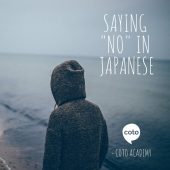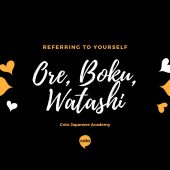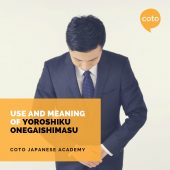日本人は礼儀正しいことで知られていると聞いたことがあるだろう。だから、日本語で「どういたしまして」という言い方がいろいろあるのは当然かもしれない。
礼儀正しい人が多いこの国では、「ありがとうございます!」という言葉は、道端や職場でよく耳にする!しかし、日本人の好意に応えることは、初心者が最初に直面する課題の一つかもしれません。 そこで今日は、日本語で「どういたしまして」を言う方法をいくつかご紹介します。
日本語で「いらっしゃいませ」を言う最も一般的な方法
国語辞典を引くと、この言葉が最初に出てくることがよくある: 「どういたしまして」。
日本語では “You are welcom、いつでもいつでも迎えられます “というような意味になります。しかし、このフレーズは日本語ネイティブ・スピーカーのカジュアルな会話の中ではほとんど使われません。これらを念頭に置いて、他の言い方を見てみよう。
もっとカジュアルな場面で「You are welcome!」を言う
まずは “いえいえ”。文字通りに解釈すると、このフレーズそのものは「No, No」という意味です。これは通常、好意を受けて感謝の気持ちを表しているときの返しとして使われます。「いやいや、それ(感謝)は言わないでもいいよ」というような意味になります。
ところで、日本語には「ない」という言い方がたくさんある。
次に「とんでもない(とんでもないです)」を見てみよう。日本人の中には、「どういたしまして」のカジュアルな言い方として使う人もいます。
次は「よかった」です。このフレーズは通常、”I’m glad. “となる。単語のテ形(例:好きで/助けになれて)の後に置くと、「気に入ってもらえてよかった/お役に立ててよかった」というような意味になります。会話の文脈にふさわしい、あるいは関連性があると感じるものであれば何でもいいです。
もうひとつ、「気にしないで」という言葉もある。このフレーズは「心配しないで」という意味ですが、文脈によっては「どういたしまして」という意味でも使われます。
例えば、誰かが日本語で「あら、ありがとうございます、何かお返しできることはありますか」などと続けるかもしれない。この場合、”気にしないで(Kinishinaide)”という言葉を使えば、”大丈夫です、心配しないでください “と意味を伝えることができます。
最後に、「いえいえ、いつでも声かけて」というフレーズを見てみよう。このフレーズは、「いえいえ」と「いつでも声かけて」で構成されている。そのうちの前者は、このセクションの前の部分で取り上げたものです。
後者の “いつでも声かけて “を見てみましょう。このフレーズの後半部分は、”I’m here for you if you need help “とか “Let me know if you need help again “というような意味になります。
この2つを足すと、「大丈夫だよ。また助けが必要になったら言ってね!” 」です。
もっとフォーマルな状況では…
しかし、もっとフォーマルでビジネス的な文脈では、別の選択肢があるでしょう。そこで、次の3つのフレーズと表現の出番です。その他のフォーマルな場面で使われる日本語(敬語)はこちらにあります。
まずは「恐縮でございます」。「恐縮でございます」は義務感を表します。「~ でございます」は “実際そうであること “を指します。
つまり、フォーマルな場面で「ありがとうございます」とお礼を言うときに使う言葉です。
次に、「役に立ってよかった」というフレーズを見てみよう。 「お役に立ってよかったです。」言葉の前に敬語の接頭辞 “お(お)”をつけることで、相手に対してより丁寧な表現になります。
「よかった」は「I am glad」と訳すことができます。この2つを組み合わせると、”お役に立ててよかったです “という意味になります。
最後になりましたが、もうひとつ使えるフレーズが「こちらこそ」です。「こちらこそ」は方向の「こちら」を指しますが、「私自身」を指すこともあります。「こそ」は「確かに」という意味で、前の言葉を強調するときに使います。
この単語を組み合わせると、”(きっと私のはずだ)そう言うべきは私だ “という意味になる。この表現は、相手から何かお礼を言われたが、自分もお礼を返したいときによく使われます。
今日学んだことをビデオで振り返ってみよう!
これらの単語、フレーズ、表現をマスターして、日常会話で使う準備はできましたか?
初級日本語コースで会話中心の日本語を学ぶ – お問い合わせはこちら
Popular “How to” Series

1. How to say”goodnight” in Japanese

2. How to say “Yes” in Japanese

3. How to say “No” in Japanese

4. How to refer to yourself in Japanese

5. How to refer to other people in Japanese

6. How to use “yoroshiku-onegaishimasu”
